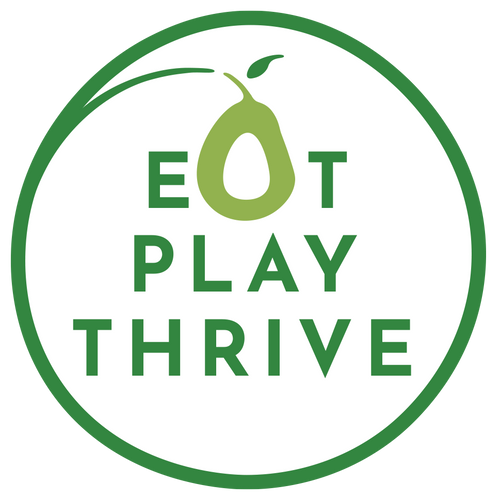
Gardening is a healthy and fun activity to do with your kids! It gets your kids outside and can be a great activity to do with them. From a nutrition standpoint it can help encourage kids to eat more fruits and vegetables, but there are many other benefits as well! Read on for benefits and how to involve your kids.
Why Should you Start a Garden with Kids
Education and Learning
Involving kids in gardening can help them with science and math. They learn about plant life cycles, the importance of water and sunlight, and the role of pollinators in the ecosystem. It helps them develop an understanding of where food comes from and promotes environmental awareness. It can peak their curiosity, getting them to ask how do plants need the sun or how do they drink water?
Responsibility and Self-Confidence
For a kid getting to place a tiny seed into a hole, watering it, protecting it and watching it explode into life teaches responsibility and ownership, as well as building their self confidence. They learn the value of nurturing and taking care of something living, which can be a valuable life lesson.
Healthy Eating Habits
Gardening encourages children to eat more fruits and vegetables. When kids are involved in growing their own food, they develop a sense of pride and are more likely to try new vegetables and fruits they may have been reluctant to eat before. There is also the thought that playing in dirt may help strengthen a kid’s immune system and overall health.

Bonding and Quality Time
Gardening is a great way to spend quality time together as a family. It fosters bonding, teamwork, and communication. You can share the joy of planting, harvesting, and enjoying the fruits of your labor.
Appreciation for Nature
Gardening exposes children to the wonders of nature. They can observe insects, birds, worms, and other wildlife that visit the garden. It instills a sense of appreciation and respect for the natural world around them.
Creativity and Problem-Solving
Gardening encourages creativity as kids plan and design their garden space. They learn to solve problems such as pest control, watering schedules, and adapting to different weather conditions.
Stress Relief and Mental Well-Being
Spending time in nature and engaging in gardening activities can have a positive impact on mental well-being. It provides a calming and therapeutic experience, helping kids develop a connection with the natural world.
Sustainability and Environmental Awareness
Through gardening, children can learn about sustainable practices such as composting, conserving water, and reducing waste. They become more aware of their impact on the environment and develop a sense of responsibility towards
How to Involve Your Kids
If you don’t normally garden, don’t let the idea overwhelm you. Gardening doesn’t require a perfectly level, large or sunny backyard. Try planting in a small raised bed, a few edibles in existing landscaping or put a few containers and soil in a sunny spot to grow tomatoes or herbs. Here's some ideas for getting your kids involved:
Plan what to grow together
Let them be part of the planning process, including selecting what plants or vegetables they would like to grow. Take them to a nursery and pick out plants together.
Designate a specific area in the garden for your kids
Maybe it’s a small raised bed or a few small pots.
Let them get dirty!
They can help with tasks like digging, raking, or removing weeds. Show them how to plant seeds at the right depth and spacing, and encourage them to participate actively.
Provide them with their own kid-sized tools
Shovels, rakes, watering cans and gloves can be fun gifts or incentives to get them started.
Make it fun!
Creating a challenge (who can water the fastest) or playing a game (find the biggest worm) can turn gardening into a fun activity.
Give them age appropriate responsibilities
Watering, weeding or harvesting to help create a sense of ownership
Let them pick fruits and vegetables when they are ready to eat

Other Fun Tips and Tricks
Plant pumpkin seeds at the 4th of July to have pumpkins by Halloween:
Pumpkins grow fastest in warmer weather, so it's worth your while to make sure they're planted in the warmest soil possible.
Eggshell countertop garden:
This one is an easy and fun activity for your younger gardeners. Most of your supplies can be found right in the kitchen. All you’ll need for this project is some egg cartons or a basic seed starting kit, clean eggshells, soil, spoons, seeds, and markers or pens. If you want to get fancy with your shells then grab some googly eyes, gems, or glitter to decorate with. Herbs will be an easy one to begin with.
DIY Plant markers:
Find stones in your own yard, from around the neighborhood, or use spoons, craft sticks or twigs. Your kids can paint them with any way they want and then use them as garden markers. When you start your garden outdoors, you can use painted items to identify your herbs, veggies, and flowers.
Plastic bottle greenhouse:
Keep your plastic bottles out of the ocean while growing your seedlings indoors. Using water bottles, you can create a mini greenhouse. Cut the bottles in half and drill some holes in the bottom for drainage. Fill the bottom half of the bottles with soil and plant 1 or 2 seeds in each of them. Put the top half of the bottles back onto the bottom for a snug fit. Keep these moist and in a warm place like the window sill before transplanting outside.
There are seriously so many ways to start a garden with your kids or let them be involved with part of the process. There's many benefits, as I mentioned, so even if it's not your thing, you can let your child plant something in the yard or maybe in an egg carton as a low stress simple entry into gardening.
